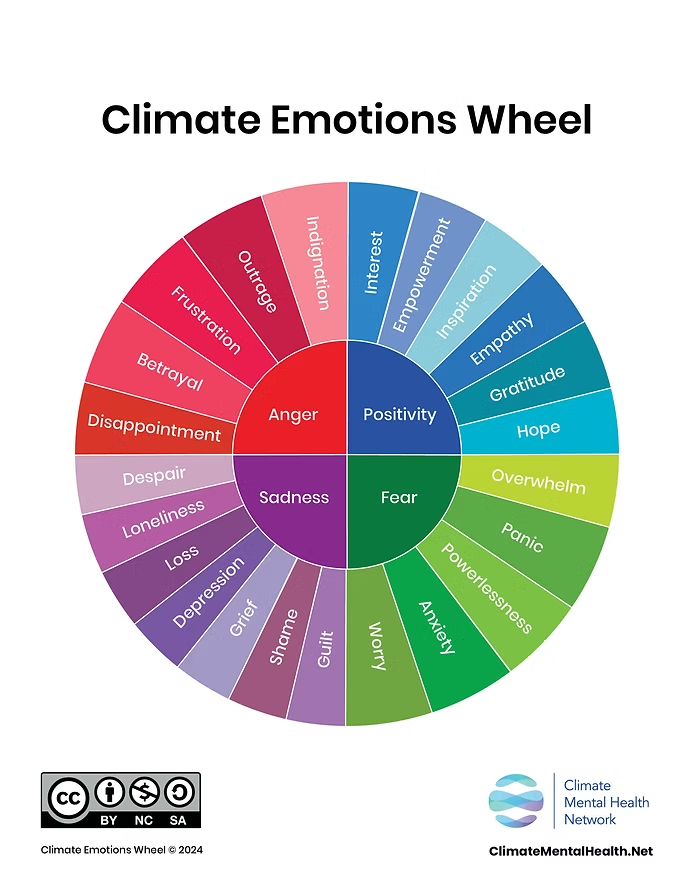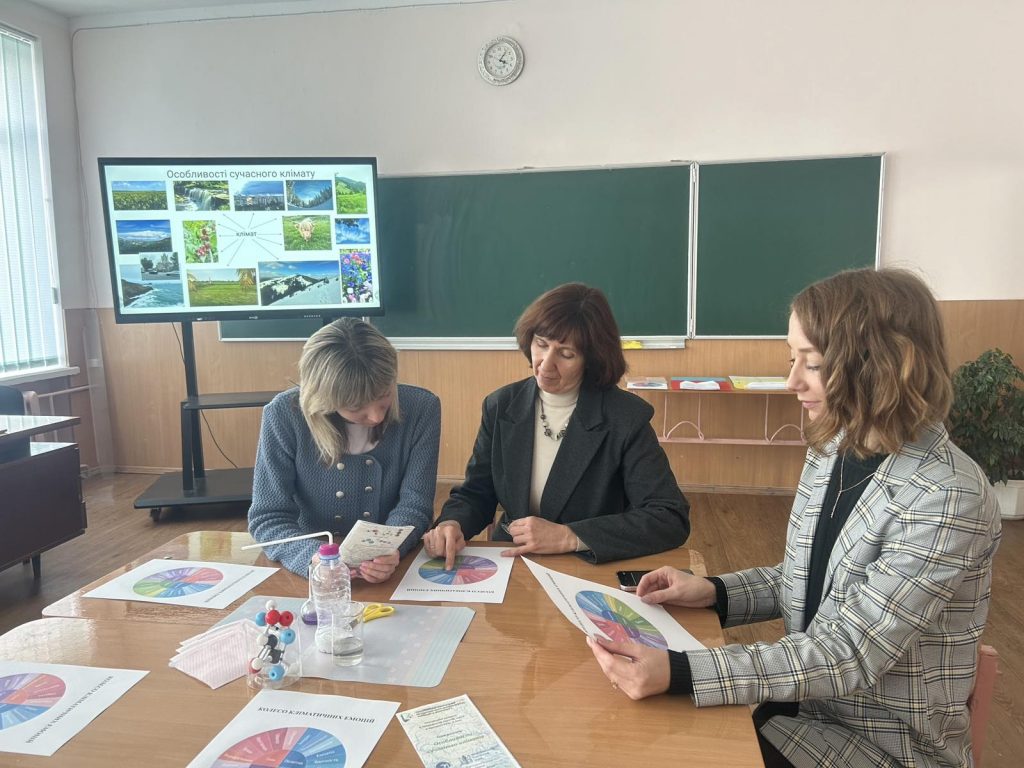-

Climate emotions wheel
Getting to know the variety of emotions presented on the wheel can help learners and teachers put words on the emotions that are being expressed individually and in groups. The…
Activity number:
1.2.1
-

Emotions checks
Daily emotional check-ins provide consistency, helping teachers establish a routine and integrate emotional literacy, fluency and care into everyday practice. This practice can be challenging at first, if you are…
Activity number:
1.2.2
-

Climate emotions symbols
This artistic practice helps explore climate emotions by drawing symbols of our emotions related to climate change on a piece of paper or on the back of a fellow learner,…
Activity number:
1.2.3
-

Climate emotions embodiments
This group practice consists in embodying emotions associated with climate change through a posture and/or a movement. This practice can help express the emotions for which we have no words,…
Activity number:
1.2.4
CLARITY Competence Area
Taking care of climate emotions and trauma, Taking care of climate emotions and traumaGreenComp Competence Area
Acting for sustainability, Acting for sustainabilityWhy use this tool?
This tool enables each student to start growing their emotional literacy as well as emotional regulation skills, so as to limit and better cope with climate emotions, including climate anxiety. It is critical for students and educators to check the level of anxiety, stress and overwhelm in the group, while providing simple practices to address some of the anxiety, stress and overwhelm on the spot. It helps express emotions so as to release the tension surrounding them.
